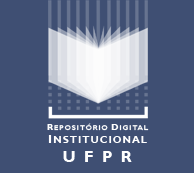EVALUATION OF CANINE ROOT CANAL THERAPY USING PROTAPER® SYSTEM
DOI:
https://doi.org/10.5380/avs.v23i1.41742Palavras-chave:
endodontia, instrumentais rotatórios, canal radicularResumo
Industry data for pet products has revealed that most Brazilian families have pets in their homes and that that humans give a large amount of attention to their pets. Oral diseases are among the most quickly perceived and treated of pet pathologies; and the most common of these is periodontal disease, which can affect the pulp and requires endodontic treatment. Recently, the evelopment of superelastic nickel-titanium alloys has revolutionized endodontic therapy, as the alloys have been used to develop novel rotary instruments. The goal of this study was to evaluate the efficiency of such rotary instruments in the ex vivo shaping of canine dental root canal therapy. The sample consisted of 40 canine incisors that had been extracted due to periodontal disease. The endodontic access procedure was performed, and the root canal was prepared using ProTaper® rotary instruments. Before and after shaping the canals, teeth were examined radiographically. The cervical, middle, and apical thirds were analyzed using the Image Lab® program. Results showed that the ProTaper® rotary instruments removed significant amounts of dentine (cervical third: T=-13.225, p<0.0001; middle third: W=410, p<0.000 1; apical third: W=410, p<0.0001). Regarding shaping of the canal, the apical third had expanded significantly, and there was a positive correlation between measurements in all analyzed thirds (cervical third: r=0.924; middle third: r=0.980; apical third: r=0.993.) This demonstrates an increase in the surface area of the channels in all three thirds. In this study, we conclude that the rotary instruments used were efficient in shaping root canals.
Keywords: Endodontics, rotary instruments, root canal
Downloads
Publicado
Como Citar
Edição
Seção
Licença
Autores que publicam nesta revista concordam com os seguintes termos:
- Autores mantém os direitos autorais e concedem à revista o direito de primeira publicação, com o trabalho simultaneamente licenciado sob a Creative Commons - Atribuição 4.0 Internacional que permite o compartilhamento do trabalho com reconhecimento da autoria e publicação inicial nesta revista.
- Autores têm autorização para assumir contratos adicionais separadamente, para distribuição não-exclusiva da versão do trabalho publicada nesta revista (ex.: publicar em repositório institucional ou como capítulo de livro), com reconhecimento de autoria e publicação inicial nesta revista.
- Autores têm permissão e são estimulados a publicar e distribuir seu trabalho online (ex.: em repositórios institucionais ou na sua página pessoal) a qualquer ponto antes ou durante o processo editorial, já que isso pode gerar alterações produtivas, bem como aumentar o impacto e a citação do trabalho publicado.















